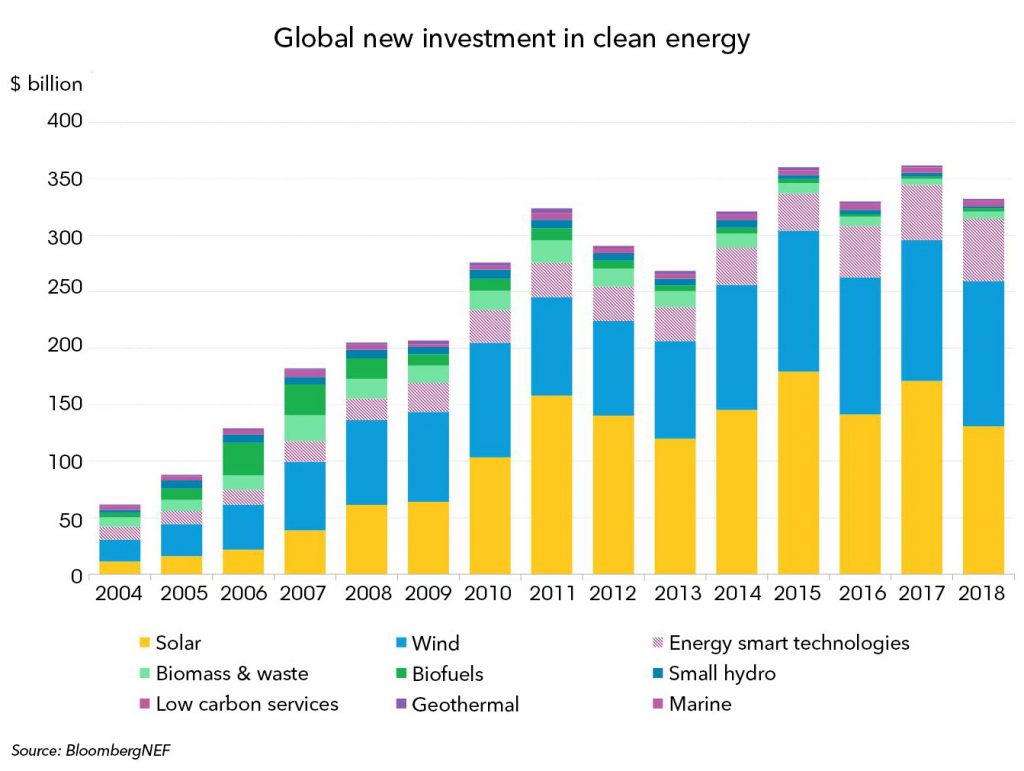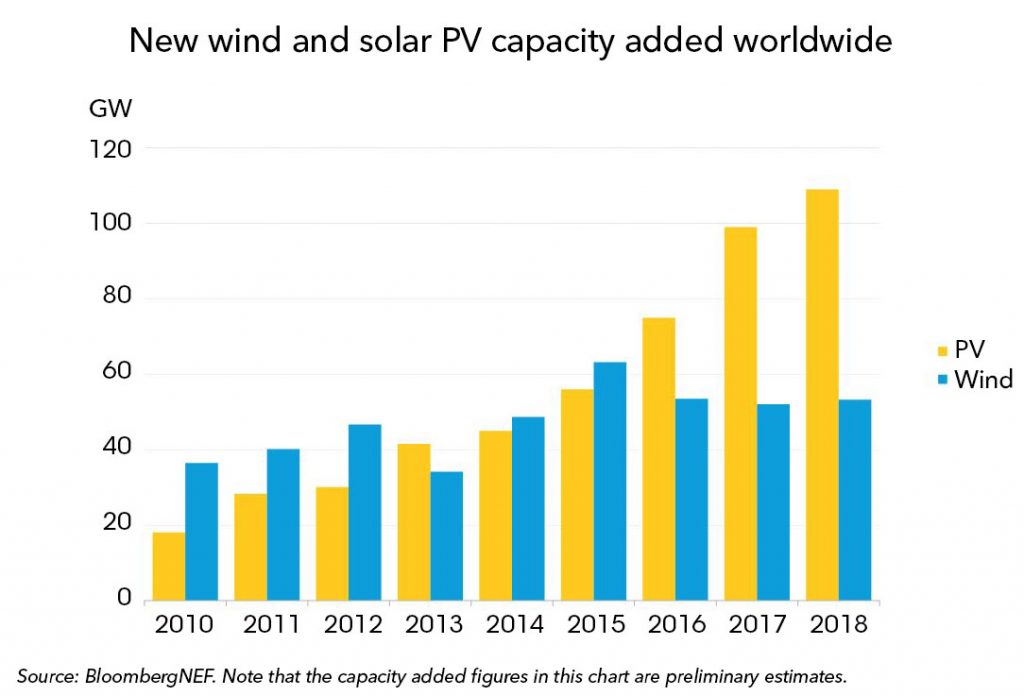I suspect there's a great deal that most of us can agree on about capitalism. The free enterprise system, of which HBS is an essential part, has lifted billions of people around the world out of poverty. It provides the backdrop for unleashing boundless human potential. It has made the US an economic powerhouse. It has played a major role in capital being allocated to the most productive uses. Free enterprise has led to the creation of a staggering number of jobs that support families and the invention of a wide range of innovative and affordable products that make people's lives easier, safer, and more enjoyable. In many capitalist economies in 2018, and especially in our own, innovation is unending, and its pace may even be accelerating. The creative destruction of capitalism gives it a remarkable advantage over other systems. You sometimes have to be willing and able to tear down in order to build up. The old and proven and venerable must sometimes give way to the new and innovative and transformational.
But we should also note that capitalism is far from perfect. While it's superior to any other system yet devised, it's subject to sometimes intense cyclicality that can result in turmoil and hardship for many. And we interfere with that cyclicality at our peril, as pent up economic forces will eventually be unleashed with far greater ferocity. Still, under capitalism, markets and economic activity can easily overshoot, in both directions. Fads can be mistaken for trends; the flavor du jour can masquerade as a time-tested recipe. An ephemeral stock price can be made to seem a permanent achievement, an unwavering final verdict. The temporary opinion rendered by the market can be easily confused with actual business success. And those mercurial capital flows, as welcome as they are when they're inbound, can wreak havoc when they reverse, or as they attract undisciplined competitors and drive excess supply at the worst possible moments. Moreover, the aforementioned creative destruction may in aggregate leave society considerably better off, even as it creates both winners and losers, and the losers often suffer through no fault of their own. A capitalist economy should be judged not just on the aggregate economic improvement driven by its innovation but also on the design and strength of the social safety net that cushions the ill, or disadvantaged, or those who simply fail to thrive in their particular setting, geography, industry, or trade. After all, creative destruction is still destruction, even if inevitable and in the service of a net gain to society.
These downsides of capitalism are among the reasons that the system is today less popular than it once was. There are other reasons, as well, that could be covered in a different, longer speech. But we should all keep in mind that the benefits of capitalism are not so obviously and directly attributable to the system the way the adverse side effects and increasing societal inequality are. The invisible hand is, by definition, invisible.
Also, tragically, in a capitalist society (but really in any system), individual or corporate greed can run amuck. Simply put, some will choose to cut corners or cross a line. It's inevitable that laws will sometimes be skirted, frauds sometimes perpetrated, society's resources misallocated, and the environment sometimes damaged. Managements are sometimes tolerated or even embraced who should not be—managements preoccupied with self-interest, managements blind to their own ethical lapses, managements with a record of racist or misogynist or homophobic tendencies. Boards of directors afflicted by conflict or indifference will sometimes look the other way at the actions of their management teams. All of this, of course, is unacceptable. And, nonetheless, it will sometimes happen. Proper governance and regulation are essential to limit the harm, as well as the reputational and financial damage. But governance and regulation exist on pendulums that swing to and fro, and may overshoot in one direction and then in the other.
One of society's most vexing problems is the relentlessly short-term orientation that manifests itself in investing, in business decision-making, and in our politics.
There is, and has always been, a gap between what business is and what it can be, the actual versus the ideal. Every one of us can contribute to widening that gap, or to narrowing it by raising the bar. We will have countless opportunities to choose.
That is really what I want to talk about this evening—choices and the act of choosing. And the way I want to discuss it is by asking questions. They may sometimes seem rhetorical, but they're not. They may sometimes seem straightforward, but they're not. Because these choices are usually hard ones, and tests not just of intellect but of character. They are shaped not just by strategy and analysis but by values.
Chainsaw Al Dunlap, a real person with a Hollywood moniker, told us that a dollar earned by killing a job was just as valuable as one earned by producing a valuable product, and Wall Street was seduced, even though it's obvious that you can't cut your way to prosperity. It's also apparent that a dollar of earnings generated through business expansion may be an annuity, and perhaps even a growing one, while a dollar gained from cost savings is a one-time improvement, an incremental cash flow that is not replicable and one that may even come at a greater cost—short and long term, financial and otherwise—than is readily apparent.
All of us can get carried away with a seemingly good idea taken to excess. Everyone knows the famous movie line, when Gordon Gekko told us that "greed is good." Do any of us really think that greed alone is what motivates a capitalist to strive, invest, and dream, or that it always leads to the best possible outcome? If greed is good, is greedier better? If I were greedier, if I paid my people less and demanded more from them, if I raised the fees I charge and cut my costs, would that make me and my company better off? Certainly not.
Business schools have sometimes taught that shareholder-value maximization is the holy grail, the sole proper focus of corporate managements. So I ask, should managements be focused solely on a company's share price, which itself is ephemeral, and do everything within their power to levitate it? What longer-term good would this possibly accomplish? Isn't it clear that Wall Street goes through mood swings, that what might float the market's boat this week might sink it the next? And might not an artificially inflated stock price tempt management into acutely short-term-oriented and potentially, even value-destructive practices in order to maintain it or inflate it further? And does anyone really believe that shareholders are the only constituency that matters: not customers, not employees, not the community or the country or planet earth?
Of course, every businessman and woman has the right to decide that their business exists solely to maximize profits. But let's stop to examine what that even means. What are those things that cause profits to be maximized? And should we be aiming to maximize them this year, or next year, or only over the fullness of time? Is short-term optimizing a waypoint on the road to long-term maximization, or could it be anathema to the achievement of that goal?
So let me ask, does paying employees as little as you can get away with serve to maximize profits, or does treating them fairly and respectfully, and even generously? Maybe it's not just society that should offer a safety net, but also companies, where they recognize that employees are, first and foremost, people who must manage through the volatility we all experience over the course of our lives. Employees are there every day working hard to serve their employer, and I believe it's very much in the employer's interest to also be there for them.
I ask you, does it maximize profit to treat customers well by selling them products that represent good value for the money, or is it best to charge them as much as you can while providing them as little as you must? Doesn't reputation matter as well? What kind of corporate citizen you are, what kind of employer you are, whether you are a steward of and not a destroyer of the environment, and of your communities? Don't people prefer to work for and do business with a generous company? A company with sound values that every day chooses to live up to them, one that thoughtfully positions itself within the greater landscape of business, government, and society at large. Doesn't that motivate employees to be at their best?
Companies face choices, and their managements must choose. It's a choice to do things that "maximize profits," to pay people as little as you can, or work them as hard as you can; it's a choice to maintain pleasant working conditions or, alternatively, particularly harsh ones: to offer good benefits or paltry ones.
It's also a choice to try to win every business negotiation, to squeeze out every dollar of profit, to crush your counterparty. It's a different kind of choice to not do that, to aim for "win-win" outcomes, to leave the other side with profit and dignity and goodwill, to build relationships that last not for a single deal, but for a lifetime of them. It's a choice to always keep your word, even when that is costly or difficult or unpopular.
It's a choice to leverage up your company to the hilt, to pile on nonrecourse debt to pay special dividends to the owners and then walk away if the business falters and the debt comes due. Just because you can do something definitely doesn't mean that you should.
Consider corporate time horizons. It's a choice to attempt to maximize corporate results over the very short run and a different and sometimes harder decision to take a longer-term view. I'm convinced that one of society's most vexing problems is the relentlessly short-term orientation that manifests itself in investing, in business decision-making, and in our politics. Educational and philanthropic endowments, for example, with institutional time horizons that necessarily span centuries, invest their funds with monthly performance comparisons. Jeremy Grantham (MBA 1966), cofounder of the global investment firm GMO, recently observed in the context of governmental inaction on climate change, "We face a form of capitalism that has hardened its focus to short-term profit maximization with little or no apparent interest in social good." Politicians who represent cities, states, and countries—entities that aspire to go on forever—must nonetheless run for reelection every few years. In some cases, they no sooner win one election than they are forced to run for reelection. Fearing loss of their seats, they become almost paralyzed into inaction. Politicians tend to follow the polls instead of their hearts or brains. They listen more to political consultants than to voters. Our short-term-maximizing politicians fail to tackle longer-term societal challenges such as climate change or unaffordable entitlement programs and the resultant on-and-off balance sheet liabilities. They never even bring these vexing issues up for debate. And of course, the best hope for dealing with such problems is to tackle them early, when there may be time to deal with them somewhat gradually, before things reach crisis proportions.
Many feedback loops reinforce today's short-term business and financial-market orientation. Louis Gerstner Jr. (MBA 1965), former CEO and chair of IBM, has written that you always get more of whatever you measure. Certainly, the constant measurement of professional money managers pressures them to perform well over the shortest measurement horizons. The more pressure you put on money managers for near-term performance, the more short-term their focus becomes. And the more pressure Wall Street puts on corporate America to deliver strong short-term performance, the more myopic the underlying businesses become. A big part of leadership is deciding, and good decision-making benefits from intelligence, thoughtful deliberation, and experience, but also, as i hope you agree, from sound values.
No one in the investment business wants to be fired for poor performance (what Jeremy Grantham calls "career risk"). No money manager wants to lose their clients. No corporate CEO wants to be terminated. And as a result, few are willing and able to invest for the long run, to make long-term-oriented decisions, to put aside the short-term performance pressures and personal career or compensation considerations to do the right thing for the business. With excessive short-term pressure, even the wisest and most capable fiduciaries can bend and even break.
As human beings, we experience time quite differently from the institutions we create, populate, and lead. Even when we want to do the right thing, there are bosses, clients, and markets overtly or subliminally pressuring us to take the short view. As John Maynard Keynes famously noted, "In the long run we are all dead." It might be tempting to believe that the long run is simply a series of short runs, but the reality is that immediate pressures can overwhelm the long-run view, and even cause us to take actions that are the opposite of what a truly long-term orientation would produce.
We must all be more aware of the distortions and outright mistakes that can arise from too much focus on the near term. But simply extending your focus to the temporal horizon is insufficient. Have you really inoculated your decision-making just by shifting from short-term greedy to long-term greedy? David Brooks was on the right track when he observed: "The things that lead us astray are short term. …The things we call character endure over the long term––courage, honesty, humility."
Corporate managements are employed to navigate, to steer the ship, to set a course, and then to make regular midcourse corrections. They are there to decide. And in business, you must often decide quickly, without complete information or the time to consider every alternative or resolve every uncertainty. Because, of course, to decide slowly is sometimes to decide too late, to miss opportunities rather than seize them. Harvard Business School's case method compresses many hundreds of real-life decision-making constructs into a two-year academic experience. HBS students learn to build decision-making teams, assess problems, gather information, debate, and decide, hopefully wisely. And then take responsibility, learn from mistakes, reset assumptions amidst a rapidly evolving world, and decide some more. A big part of leadership is deciding, and good decision-making benefits from intelligence, thoughtful deliberation, and experience, but also, as I hope you agree, from sound values. Choosing what to maximize, how, and over what time frame, is an expression of those values. The commitment to reconsider, evaluate, question, and modify your decisions in light of your values is an expression of character.
With an overly narrow focus on the near-term maximization of corporate profits and share price, business leaders leave themselves vulnerable to criticism and harsh regulation. When business owners and business schools fail to regularly ask hard questions about capitalism and its impact on people of every skill set and background, we increase the chance that when these questions are asked, they will be asked by ideologues seeking to point fingers, assign blame, and make reckless changes to the system. One US senator recently unveiled the Accountable Capitalism Act, which requires corporations of a certain size to procure a federal charter that would require 40 percent of corporate boards to be composed of employees. This seems both ill-considered and unlikely to work. I doubt this bill will become law. But when capitalism goes unchecked and unexamined, and management is seduced by a narrow and myopic perspective, the pendulum can quickly swing in directions where capitalism's benefits are discounted and its flaws exaggerated, thereby leaving its future even more clouded and uncertain. While it's hard to see how this proposed regulation would solve the problems that I've raised tonight, it's exactly the kind of proposal that business will have to contend with when complex issues go unexamined, and when character, sound values, restraint, and long-term thinking fail to gain the upper hand.
To move society forward, complex and challenging issues must be addressed. This new convening center can and must be part of the solution. Beth and I sincerely hope that people will convene here, respectfully debate the most challenging issues here, and identify potential solutions here. With HBS faculty and students driving the conversations, we are optimistic that HBS and Harvard can be at the forefront of new conversations, fresh ideas, and innovative solutions.








